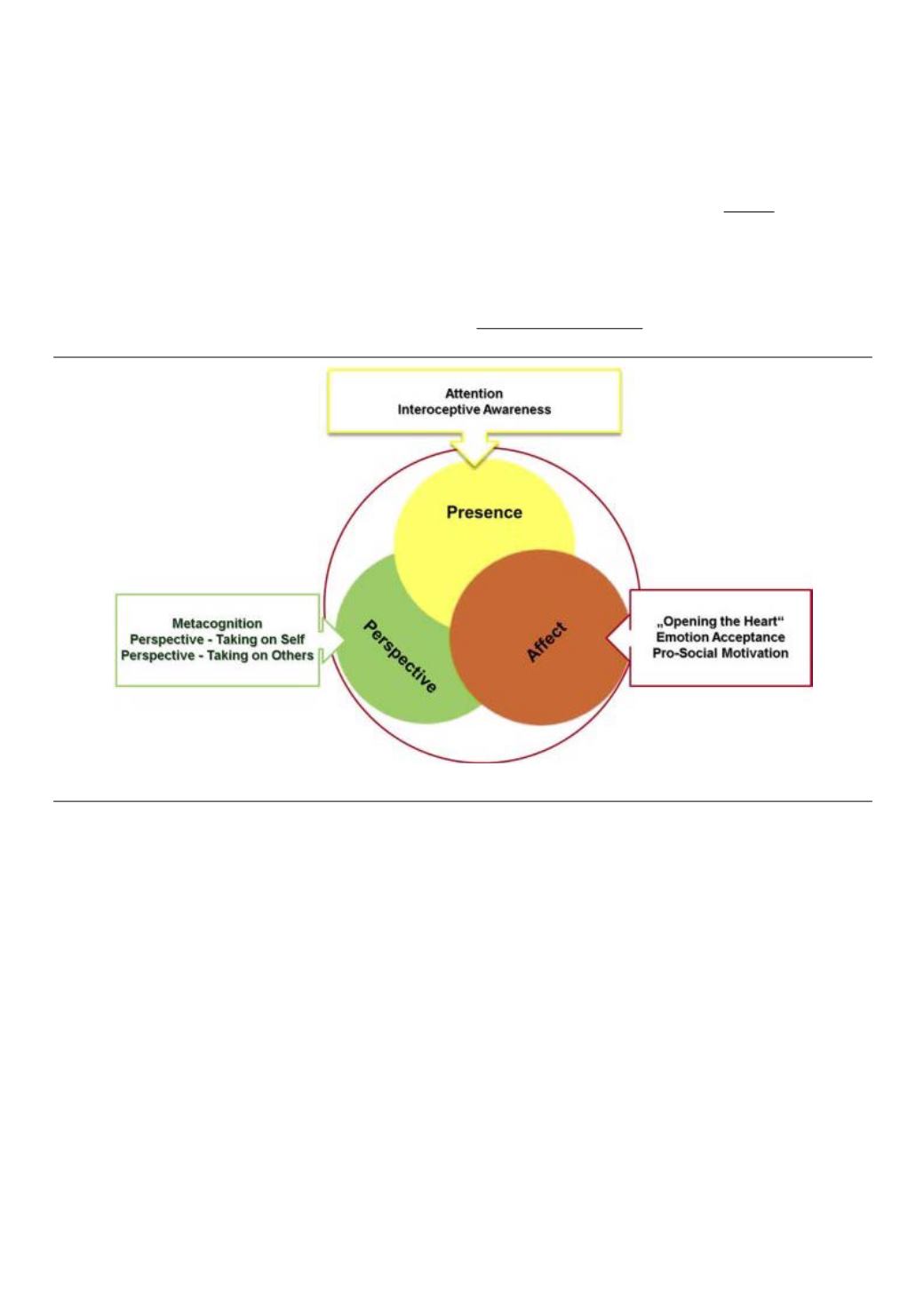
next paragraphs, was developed to form the basis for the cultivation of compassion in the broader
sense and make it accessible to the scientific study within psychology and neuroscience.
The ReSource Model of Compassion
The ReSource model was developed to operate as a framework for a European-funded
longitudinal study on compassion training led by Tania Singer and her team (see
for details
on the training protocol). The name “ReSource” implies that the cultivation of compassion entails a
build-up of resources in various domains (e.g., cognitive, affective, motivational, social). At the
same time, rather than acquiring completely new skills, cultivation is understood as a process
through which we tap into qualities and dispositions that are already present (which could
collectively be referred to as the “source”; also see
.
Figure 1: The ReSource Model of Compassion
A first important distinction that the model (Figure 1) makes is that between affective and cognitive
aspects of compassion. The
affective
domain comprises various skills and dispositions of handling
difficult emotions, of generating feelings of love, warmth and benevolence, as well as prosocial
motivations. The cognitive domain is termed “
perspective
” in the model because it refers to the
abilities to assume a certain observational perspective on thoughts (metacognition), to be aware of
the different aspects of “self” and shift between these aspects at will, and to take the perspectives
of other people. As will become clear throughout the description of the model, these different
domains rely on different neuro-cognitive systems, making the distinction not only conceptually but
also biologically plausible.
A precondition for cultivating these two crucial aspects of compassion is the ability to stabilize the
mind, an ability associated with attentional faculties, as well as learning to turn the focus from
external events to internal mental events (introspection) and bodily events (interoception). In the
model, we refer to these characteristics collectively as “
presence
”, as one goal of this preparatory
phase is to sharpen our attention to what is happening in the present moment rather than to the
past or future.
In the following sections, we will describe these three broad categories – presence, affect and
180


